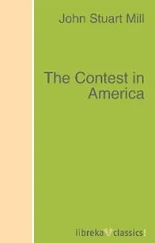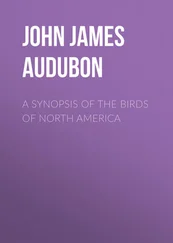He spent the following afternoon in the television room, watching the Stanford-Arkansas football game, and returned to his cell for the 4 p.m. head count. At 4.30 the whistle blew to signify the end of the count, and he waited for his cellmate to go to the food hall. Tim declined to join him, saying that he had eaten on the early line. The moment that his cellmate left, he got to work. 1
He opened his locker. He removed the white laces from his sneakers and replaced them with dark ones. Then he sat down in front of the locker, a newspaper across his lap, and painted out the white stripes on his shoes and handball gloves with black dye. There was a sudden jangle of keys outside his cell door, and he quickly stuffed the shoes back in the locker. His heart was pounding as he sat motionless, listening to the guard move slowly away. By the time that it was safe to retrieve the shoes and return to work, he was sweating. He was rushing now, and his hands got covered in the dye. He wiped them on his handball gloves and shoved them back in the locker with the sneakers. Then he moved to the sink, where he began to scrub the black paint off his hands with a wire brush. He used his towel to mop the spilled paint off the floor in front of the locker. Finally, he hid the stained towel under his mattress.
There could be no going back now that his escape preparations were under way. He would not be able to explain why he had painted out the white on his gloves and shoes. He had crossed the line. He returned to his bunk and wrote what, at first glance, appears to have been an extraordinarily self-righteous farewell note to the guards. ‘In the name of the Father and the Mother and the Holy Ghost,’ it read, ‘Oh, Guards—I leave now for freedom. I pray that you will free yourselves. To hold man captive is a crime against humanity and a sin against God. Oh, Guards, you are criminals and sinners. Cut it loose. Be Free. Amen.’ Those who knew Leary well could recognize his sense of humour at work here, but everyone else could be forgiven for seeing only the arrogance and ego that so annoyed his enemies.
Tim then had to wait until after the next count, at 8.30, before he could make his move. Outside the sky was darkening and the weather was becoming cloudy. But there is a big difference between cloud and fog.
The thought of escape had been present when he was first imprisoned seven months earlier. During her very first visit, Rosemary had looked at Tim and made him a promise: ‘I’ll free you, my love.’
This was at Chino, a maximum security prison used as a holding centre for new prisoners. It was where convicts were evaluated and assigned to the most suitable prison to serve their time. It was here that Tim learnt about his potential future homes within the California prison system. Tehachapi, San Quentin and Folsom were all considered escape-proof. So was Vacaville, which was where the mentally disturbed were usually sent. It had a reputation for unpredictable maniacs and sudden violence, but it was not as feared as Soledad. Soledad was nicknamed ‘Gladiator School’, and was notorious for homosexual rape. The only options from which escape seemed possible were the forestry camps in the mountains, and the California Men’s Colony at San Luis Obispo. This was a minimum-to-medium security jail for professional and elite prisoners. But it seemed unlikely that he would be sent to either of these two facilities. These were options for quiet, uncontroversial prisoners, and, according to President Nixon, Timothy Leary was ‘the most dangerous man in America’. 2
A factor in the choice of jail that he would be sent to was his status amongst the younger prisoners. The penitentiaries of California were notoriously brutal and violent. This was evident to Leary on his first night, when a burning mattress fell past his bars. It was accompanied by screams and shouts from convicts who were attempting to burn the jail to the ground while they were still locked inside.
New prisoners had to be quick to show allegiance to a particular clique or racial group, for a lone prisoner with no protection was seen as weak and vulnerable. When Leary arrived he was a hated figure in much of America. As one inmate told him, ‘If I had teenage kids and they were into drugs and I thought that you encouraged them, I’d have no hesitation in shooting you in cold blood.’ 3 This was a common attitude from the guards as well as many of the older cons. These were men who were on the wrong side of the generation gap, who often felt powerless to protect their children from the horrors of drugs and drug culture. And if there was one man who could be held responsible for the tsunami of drug use that swept the nation in the last years of the 1960s, it was Dr Timothy Leary.
Yet Leary was an untouchable figure in the prison system. This became apparent shortly after his arrival, when he intervened to stop the beating of a convict believed to be a snitch. Tim called for the guards, who rescued the man before he was seriously hurt. In doing so, he broke the cardinal rule of the jail—that of minding your own business. This should have earned him a beating, but the attack never came. Leary was protected by his status amongst the younger inmates. He was a living legend to prisoners in their early twenties and below, and especially to all those who had been involved in the drug culture. Drug use within the prison system was a long way removed from the idealistic, pacifist ideals of the flower children during the ‘Summer of Love’. Inmates would take whatever pills they could get, and those with a taste for amphetamines were unpredictable, violent and genuinely scary. It was immediately evident to the guards that, if he wished, Leary could wield his influence and cause a great deal of trouble, and a potential agitator is something that prison officers need to take very seriously.
So a move to the low-security penitentiary at San Luis Obispo, the California Men’s Colony West, did make some sense. The inmates here were older, white-collar prisoners, and the jail was regarded by many as a ‘country club’. The amount of time inmates were confined to their cells was kept to a minimum, and well-behaved prisoners were granted privileges such as contact with visitors or personal gardens. The convicts were aware that they had it good and that they had a lot to lose if they strayed from the conformist path, so they generally resigned themselves to doing their time peacefully. In case anyone was harbouring seditious plans, a semi-official ‘snitch’ system was in place involving certain prisoners reporting the inmates’ gossip to the officers in return for privileges. It was an ideal place to neutralise any potential Leary had for rocking the boat. And he was, after all, a 49-year-old academic and not some hardened street punk.
But was he an escape risk? San Luis Obispo was a low-security prison that did not usually take prisoners with long stretches to serve, as this placed them in a high-risk category. Tim had already been sentenced to a potential 20 years inside, and, for a man a few months short of his fiftieth birthday, this was a life sentence in all but name. It appeared that it would take something close to a miracle to put Tim in a low-security prison but, as Leary once explained, he was ‘in the miracle game’.
On his third day at Chino he was sent for the mandatory psychological assessment and presented with a set of tests. A significant part of these, he was shocked to realise, had been written by himself, 14 years earlier, when he had been one of America’s leading psychologists. They were known in psychological circles as ‘The Leary’. As he scanned the questions he knew exactly what personality traits they were assessing and measuring. He was able to answer each question in such a way that he would appear as close to a model prisoner as it is possible to get. The completed tests clearly showed, to the surprise of anyone who had read the newspapers during the previous decade, that Dr Timothy Leary was docile, conformist and meek. He was, the paperwork insisted, in no way an escape risk, and no one was prepared to argue with the paperwork. So the decision was made: Tim would be sent to San Luis Obispo.
Читать дальше












